Dia de los Muertos in Chapala, Mexico
The 'Dia de los Muertos' or 'Day of the Dead' is definitely one of those things that thousands of people around the world would love to see and experience for themselves, but not everyone can come and experience this special annual cultural event in Mexico.
One of the many reasons why it is so fascinating to most people is because the culture is just so different than what they might be used to when someone dies. In many countries around the world, including the United States, death is a very sorrowful and somber time, when the family of the deceased person gathers to share the loss and to grieve for their loved one. In Mexico, they see death more as an accomplishment, almost like a racer sees a finish line, and as a fulfillment of their purpose on earth. They celebrate this every year in their homes, their streets, their towns, and in their states all over Mexico. With special foods, colorful sugar skulls, and lots of pink, yellow, and purple decorations everywhere, this is a two day celebration that you do not want to miss.
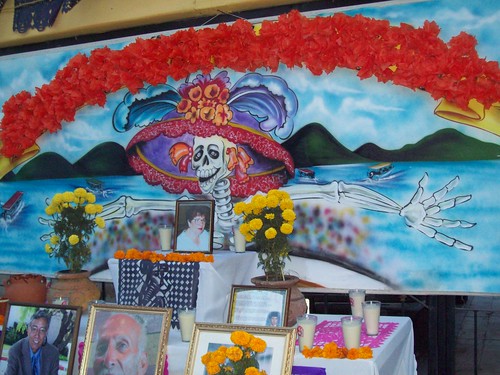
One of the most unusual small cultural things to notice are little stands selling a special 'el dia de los muertos' day food, called 'Pan de muerto' or translated, 'bread of the dead'. This special 'bread of the dead' is a light, sticky and fluffy sweet bread made especially for the annual day of the dead. This treat is yet another way Mexicans honor their dead.
The streets of each town are swept clean and covered in a mixture of bright pink, yellow, and purple (the special 'el dia de los muertos' day colors) aspen sawdust for the two day celebration. The streets are now bustling with townspeople and a few from neighboring towns who all gather to see and to appreciate all that these mourners have done for their dead.
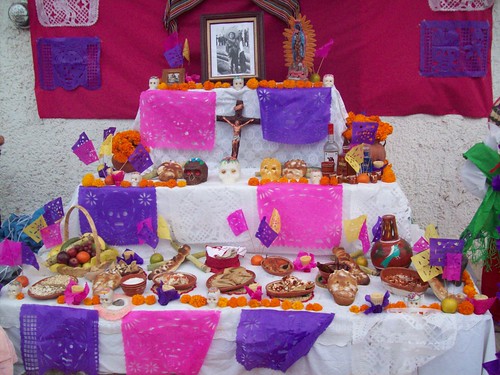
The day of the dead is celebrated largely over two whole days of parades, parties, and lots of Mexican mariachi music. One of the two days is set apart especially for children who have passed away. The way most of the people honor their dead is with a small altar outside the front of their house with traditional pink, yellow, and purple colored decorations, and some of the deceased child's cherished things, like their favorite foods and candies, along with some of their most prized personal belongings, such as games or toys and occasionally a piece of clothing or a pair of shoes. Sometimes this set up is accompanied by a few photos of the child.
Sometimes you will see an altar set up for a family that died, and occasionally, there will be a piece of paper telling the story of what happened to them, and what some of their favorite things to do as a family were. This is very uncommon, though, as it is uncommon for entire families to die together.
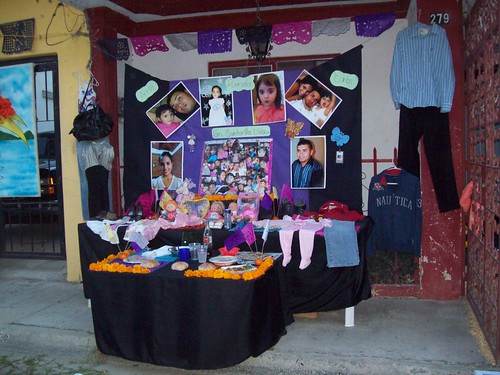
Mexicans celebrate the lives of deceased adults in a very similar way to how they celebrate their deceased children. Altars are set up outside each house, with big, thick, white candles, and the altars are then covered in that specific person's favorite things like foods, candies, and pictures of the deceased, some with their families. You might also see a few altars with pictures of the person doing something they loved. For instance if they really liked to cook things, their family might put up a picture of the deceased person cooking, or if they liked animals, they might put up a picture of the person with their favorite pet, or animal. As you might have already guessed earlier, the second day is set apart to celebrate the adults who have died. These altars are usually built new every year. Some families have altars for people who died within the past year, while others have altars for loved ones who passed away many years ago.
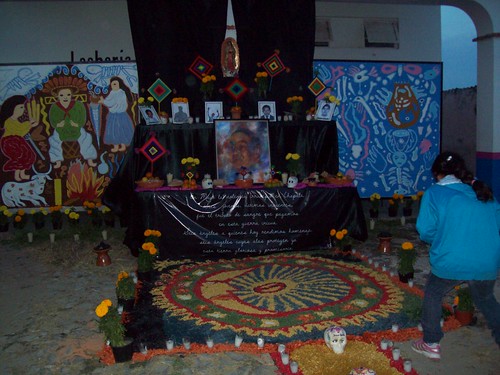
Walking down the pink, yellow, and purple dyed aspen sawdust-covered cobblestone streets of Mexico during the 'El dia de los muertos' and smelling candle wax from the big thick white candles creates a very unique experience. Add that to the sweet smell of the 'pan de muerto' still lingering in the air and seeing all of the brightly colored altars illuminated up by candlelight makes it even more of a once in a lifetime event. Taking in how very different death is celebrated on 'el dia de los muertos' in Mexico is truly an amazing cultural event, and being able to be a part of it makes it even more mind-opening and perspective changing. Chapala, Mexico is the place to go to if you want to have an experience like this.
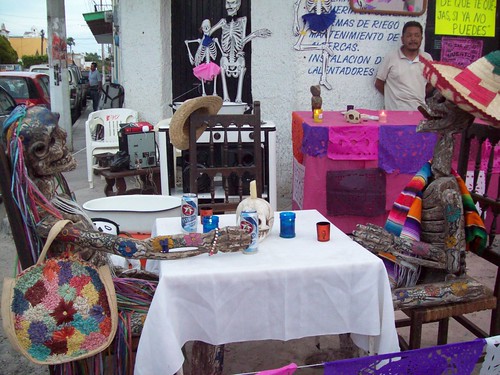
'El dia de los muertos' takes place on the first and second days of November, and is celebrated in almost every town and village in Mexico, no matter how big or small, and in some countries in Central America. This tradition, which is believed to date back almost 3000 years to the practices of indigenous people of Mexico, is still alive today. The Day of the Dead is a way to take a peek at how Mexican people view death as not the end of life, but the beginning of a new part of life.
Joy Whitehead is a member of the Youth Travel Blogging Mentorship Program
All photos courtesy and copyright Joy Whitehead



















